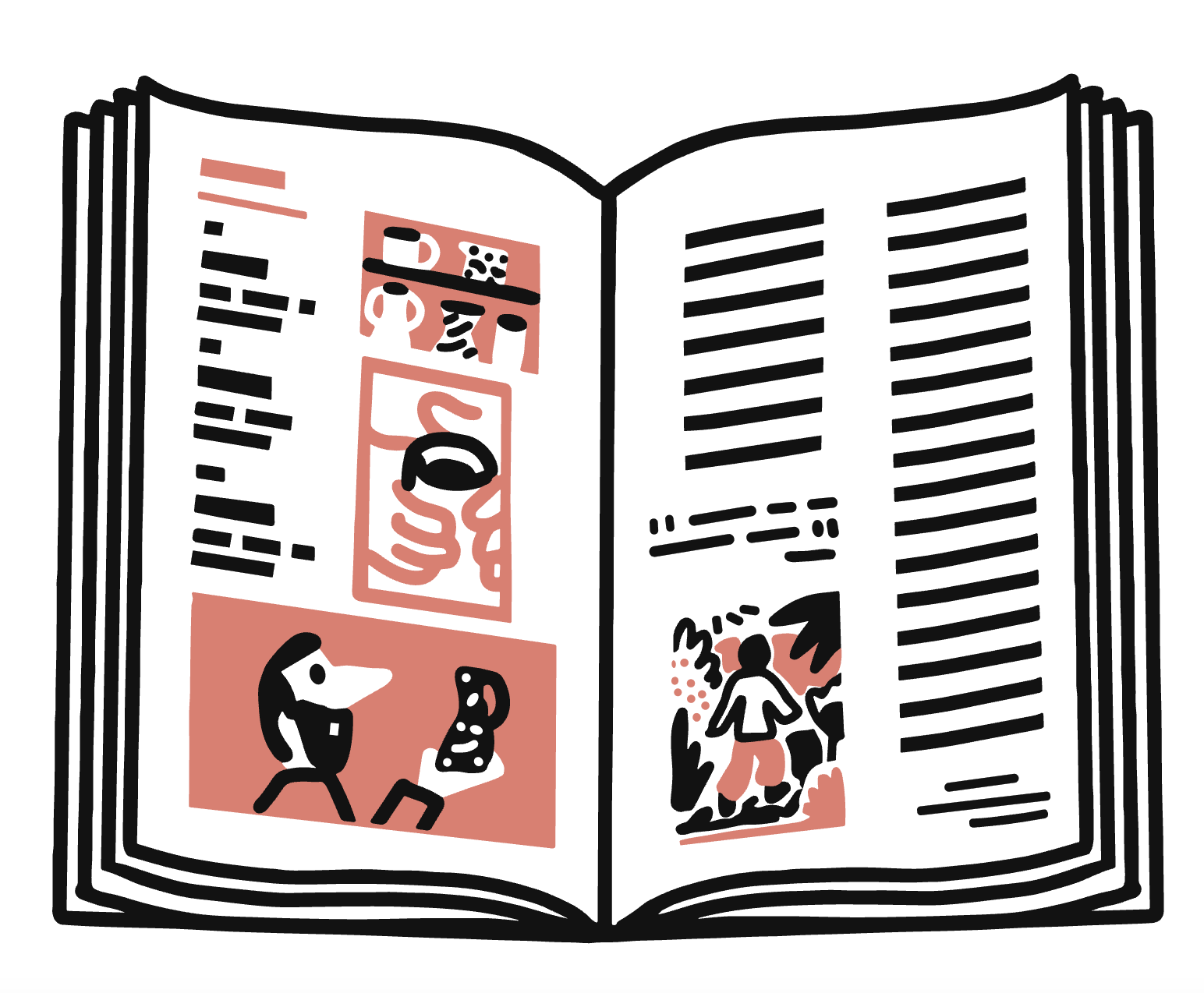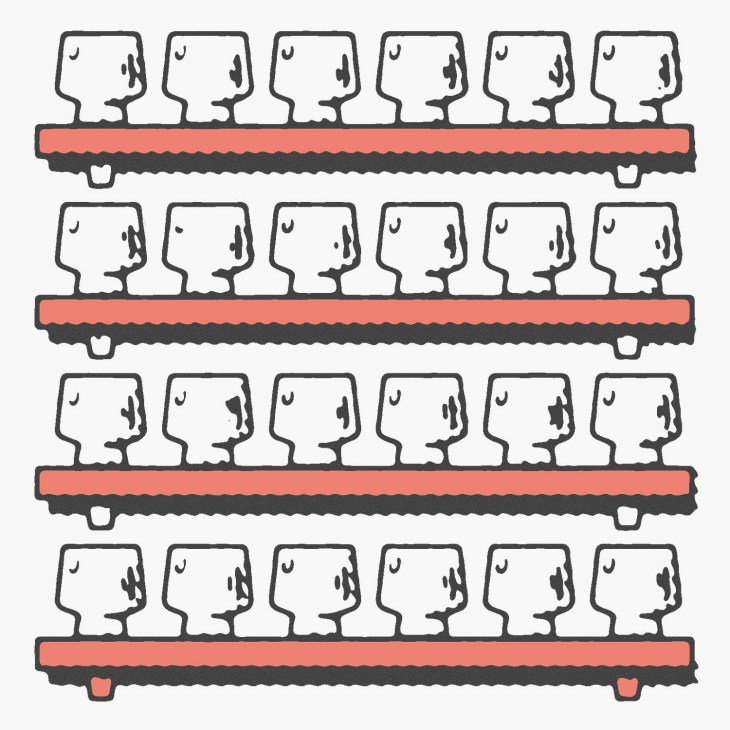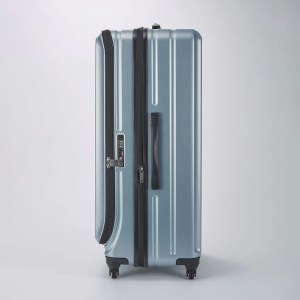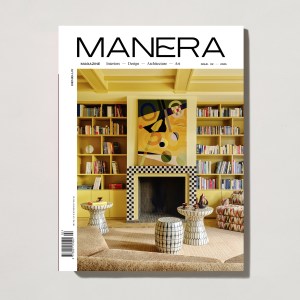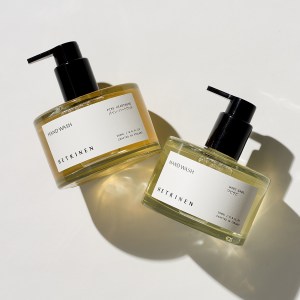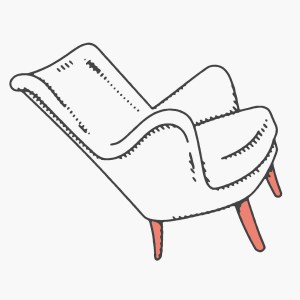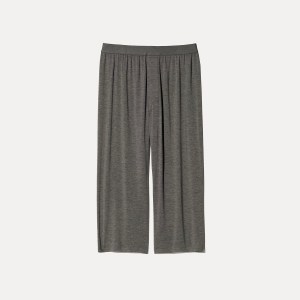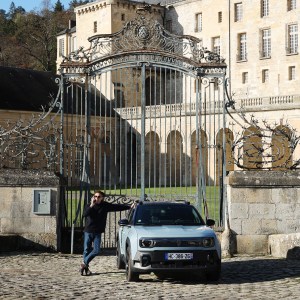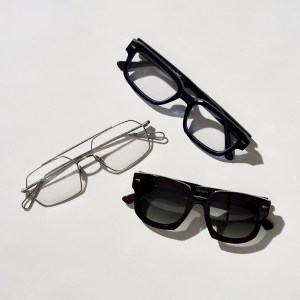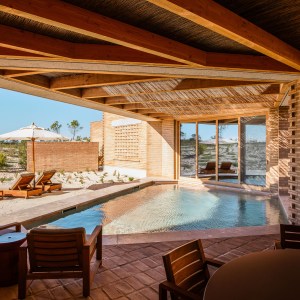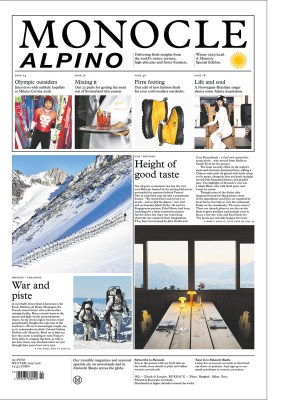Here in Thailand, 2026 promises to begin with a bang. The country’s prime minister, Anutin Charnvirakul, who is currently in charge of a caretaker government, has called early elections even earlier than expected and February’s vote is likely to produce another cobbled-together coalition. Thailand’s prolonged political uncertainty – along with neighbouring Cambodia’s scam-centre economy and Myanmar’s ongoing civil war – leaves Vietnam and Malaysia as continental Southeast Asia’s standout performers.
Hanoi’s continued rise should come as no surprise but the buzz coming out of Kuala Lumpur is less expected. Malaysia’s prime minister, Anwar Ibrahim, has been exemplary on the world stage and is a strong contender for leader of the year. The economy is humming as overdue reforms are protested in public but praised in private by grateful business owners. One for foreign investors to watch, especially those who care about democratic values as well as dollars.
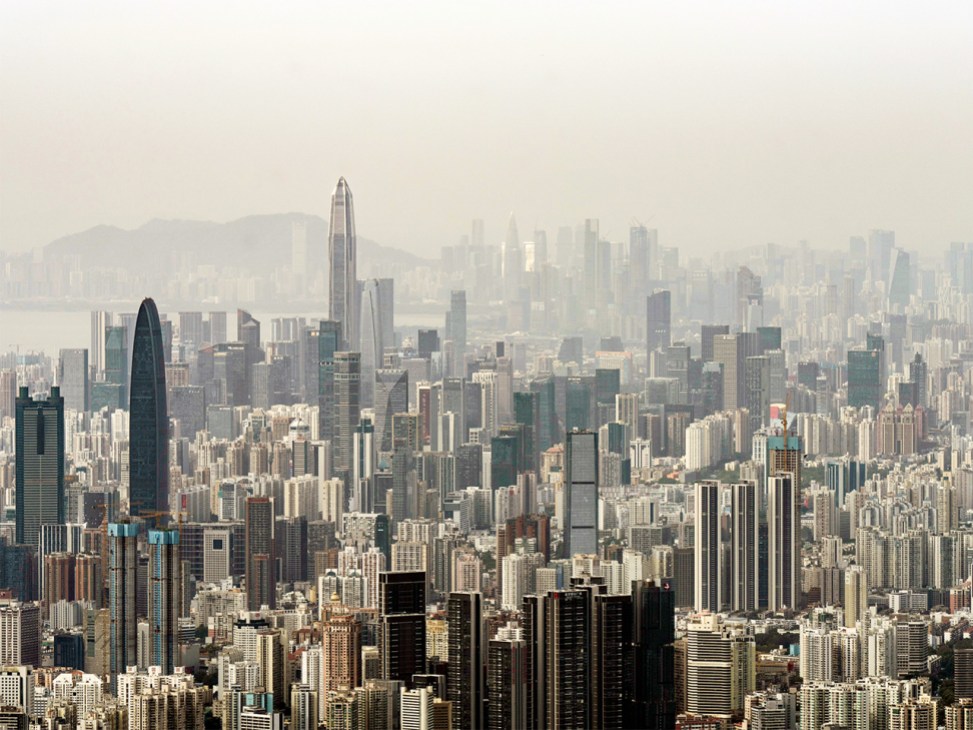
Across the water, the Philippines has taken over the rotating chairmanship of the Association of Southeast Nations. The country’s president, Ferdinand “Bongbong” Marcos Jr, has reinvigorated the US alliance, which should guarantee strong support from Washington over the coming year but could torpedo any hope of progress on issues requiring buy-in from China, especially on the South China Sea. As Marcos Jr’s six-year term enters its final third, mired in a corruption scandal not of his own making, more attention will shift to his friend-turned-foe Sara Duterte. The serving vice-president remains a favourite to move into Malacañang Palace in Metro Manila when the removal vans come for Marcos Jr in 2028, despite her father’s incarceration at The Hague and her own close call with impeachment.
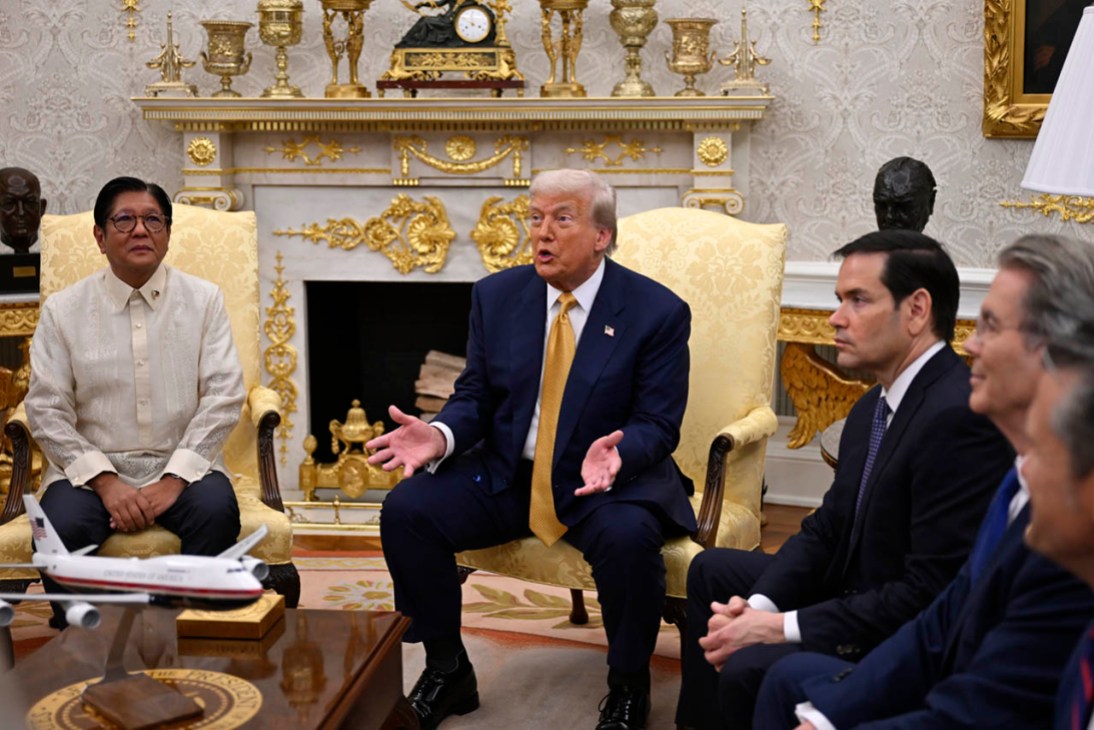
Senator Bam Aquino, the offspring of another former president, is being talked up as a contender by the centre-left. Meanwhile, I was impressed by the Filipino tourism minister, Christina Garcia Frasco, whom we interviewed for The Escapist. Frasco certainly sold me on the far north of the island of Luzon. (I’ll need to fit in a visit around my regular hops between Suvarnabhumi and Hong Kong.)
Speaking of my old patch, Hong Kong continues to defy the naysayers. Its stock market has reclaimed the global IPO crown and the special administrative region’s good fortune looks set to continue next year. Beijing clearly wants Hong Kong to succeed as its international gateway and the big financial-services firms are staffing up again. One of my favourite business stories of the year was about bankers completing their “tour of duty” to Singapore and returning to Hong Kong – surprise, surprise. One headline declared, “The next China is China.”
As India and Indonesia struggle with strongman rule, China’s one-party system marches ahead. The announcement of the next five-year plan in March will reveal which industries and technologies Beijing intends to focus on next. Meanwhile, a visit by Donald Trump in April (if it goes ahead) could result in outpourings of adoration, envy or rage – or a mix of all three. Monocle might even be in Shanghai at the same time. Watch this space.
For me, the real showstopper will come at the end of the year when China hosts the Asia-Pacific Economic Co-operation summit in Shenzhen. By now, most of us know the story of Shenzhen’s rise from a small fishing village on Hong Kong’s doorstep to a towering, technology-rich metropolis but it’ll be a rare opportunity for Western leaders to see it up close. I can already imagine Trump signing a hotel deal, playing a round of golf at Mission Hills and praising Deng Xiaoping as a visionary property developer. As we enter the second quarter of the Asian century, the East’s ascendancy and its leadership are becoming more apparent. And perhaps we should start calling it what it really is: China’s century.
James Chambers is Monocle’s Asia editor. Read about why he’s betting on Bangkok for the future of contemporary art here. Heading to Asia? Consult our online City Guides to Bangkok, Hong Kong, Kyoto and more. You’ll find them at monocle.com.
The Christmas drive up to the mountains has its traditions, rules and tunes. The original plan called for everything to be shipped up in advance on the train, while our journey would involve the cosy dining carriage on the Chur to St Moritz leg the day after for a gentle arrival in the Engadine. A schedule change (surprise! I am filing this column from Bahrain) required a speedy rethink on the transport and overall Christmas-logistics front. I devised a quick plan with my chief navigator and after a bit of tweaking here and there, we decided it would go something like this:
1.
Leave the Zürich staff Christmas party at a sensible hour.
2.
Wake up early Thursday morning to pack and be on the road by 08.00.
3.
Get to St Moritz by lunch, pick up the tree and do a round of grocery shopping.
4.
Leave mom in charge of the decorating and coniferous styling.
5.
Depart early Friday for Zürich and zip past the office before valeting the car at the airport with plenty of time to catch the Swiss flight to Dubai.
One thing that was missed from the pre-departure checklist was the Christmas playlist. Up until last year, Yuletide tunes were flawlessly transmitted via a tiny iPod. Yes, go ahead and have a good laugh at my lack of modernity and spending on new tech – but there was never a need for an upgrade until my microscopic music box went missing sometime in the spring. It is hardly the season to bore you or myself with the various reasons why I have not yet searched for a replacement (is that even possible?) or a more advanced upgrade. Rather, I’ll explain what happens when you need to keep the mood in the Land Cruiser seasonally perky and opt to improvise.
Everything would’ve been fine if modern vehicles still sported CD players but I was left to find Helene Fischer on Youtube. It pains me to even write this. No matter. I found Frau Fischer’s Weihnachts–Hits and off we went. We made it through 10 tracks before switching to Bublé. So far, so okay (Decathlon adverts aside). At about the same time that we turned off the highway for the climb up the mountain road, the playlist changed to something that Youtube claimed was from the 1940s. The first song sounded a bit familiar with all its frost, windowpanes, snowflakes and crackling. “Do I know this?” I asked my fellow passengers. “No, it’s not a classic,” said the navigator. Song two was a bit more swingy and for a moment I thought that I knew it but quickly realised that it wasn’t Dean Martin nor another Rat Packer. Song three sounded like song one but it was a female voice purring about the sax, vinyl, snowmen, crackling and windowpanes. Something was suddenly off. Would someone really reference vinyl in their lyrics circa 1947? “I think this is all AI rubbish,” I declared.
The navigator did some quick research and soon confirmed my hunch. “These songs seem to tick all the AI-generated boxes” he said. We swiftly found our way back to humanity but this little audio incident has been nagging me all the way to the Gulf. Aside from the annoyance of being momentarily duped, what concerns me is that such rubbish is so celebrated by analysts and investors the world over. “Everyone should have substantial AI investments in their portfolios,” said a tech sorceress on Bloomberg. Really? Really? The smart money should be investing in a jazz ensemble from Kyoto for Christmas 2026 and charging appropriately for an elegant little concert season. Till then, get off the playlists, put on some Perry Como and have a superb Christmas! Cheers.
Enjoying life in ‘The Faster Lane’? Click here to browse all of Tyler’s past columns.
In this moment of goodwill to all men (and ladies too, of course), you need to stay alert because, believe me, all sorts of mean shit is going down all around you. But fear not, because we’re here to keep you safe with our guide to spotting Christmas cheapskates, lazy gifters and passive-aggressive sleights.

They say: “This year we’re not giving gifts, instead we are donating the money that we would have spent to a donkey sanctuary.”
It means: they think all of their family are a bunch of asses, so they might as well just give the cash to the real deal.
They give you: a scented candle.
It means: they think that you’re super boring but probably have quite a nice house.
They give you: a panettone.
It means: they think that you’re super boring but at least you have a healthy appetite.
They sent you: a Christmas card that features their family wearing jolly jumpers and sporting beaming grins.
It means: they’re Americans. Or members of a European royal family. Or, they’re surely getting a divorce next year.
They say: this is the final Christmas card you’ll get from us.
It means: “We’re Danish.”*
They sent you: a digital Christmas card.
It means: “You’re dead to us.” Or also, from next year, “We’re Danish”.
They gave you: a Monocle subscription.
It means: you’re the cool cat in the family. And you can even read.
Your partner gave you: the first nice gift ever – and you’ve been together 20 years!
It means: he’s having an affair.
Your partner gave you: tea towels, a set of saucepans or a kettle.
It means: you should be having an affair.
All your business contacts sent you: boxes of chocolates.
It means: congratulations, you now live in Switzerland.
You received: a figurine of a man shitting with gusto.
It means: you have made an enemy this year. Or, congratulations you live in Barcelona.**
Your partner gave you: clothes that are at least one size too small.
It means: you’ll be Googling “weight-loss jabs” later today.
Your partner gave you: secateurs.
It means: can you do more around the garden?
Your partner gave you: saucy underwear.
It means: extra stuffing all round.
Belated Christmas card: arrives on December 24.
It means: they received yours several days ago and felt obliged to respond. Or, they have just about written you off.
Your partner promised to: take you to a Monocle conference in 2026.
It means: this one’s a keeper.
* It’s not that we’re implying that Danes are particularly cheap, rather that the country’s national postal service, PostNord, has announced that it will stop all letter deliveries at the end of this year because of falling demand – a collapse of 90 per cent since 2000.
** Catalans add the figure of a shitting man to nativity scenes. Known as El Caganer, he’s been popping up – and pooping out – for more than 200 years. His origins remain sketchy but, boy, is he loved.
To read more columns by Andrew Tuck, click here.
Here you’ll find 25 delightful gifts that balance utility, beauty and a sense of worldly curiosity. The list travels from Gothenburg and Seoul to Parisian caviar counters and Azorean vineyards, taking in books worth keeping, clothing designed for real life and objects that improve the home without shouting about it.
Some are modest, some indulgent and all are chosen with longevity in mind. Consider this your guide to Christmas shopping done properly – or a persuasive case for treating yourself.
11.
A copy of ‘The Monocle Book of Designers on Sofas’
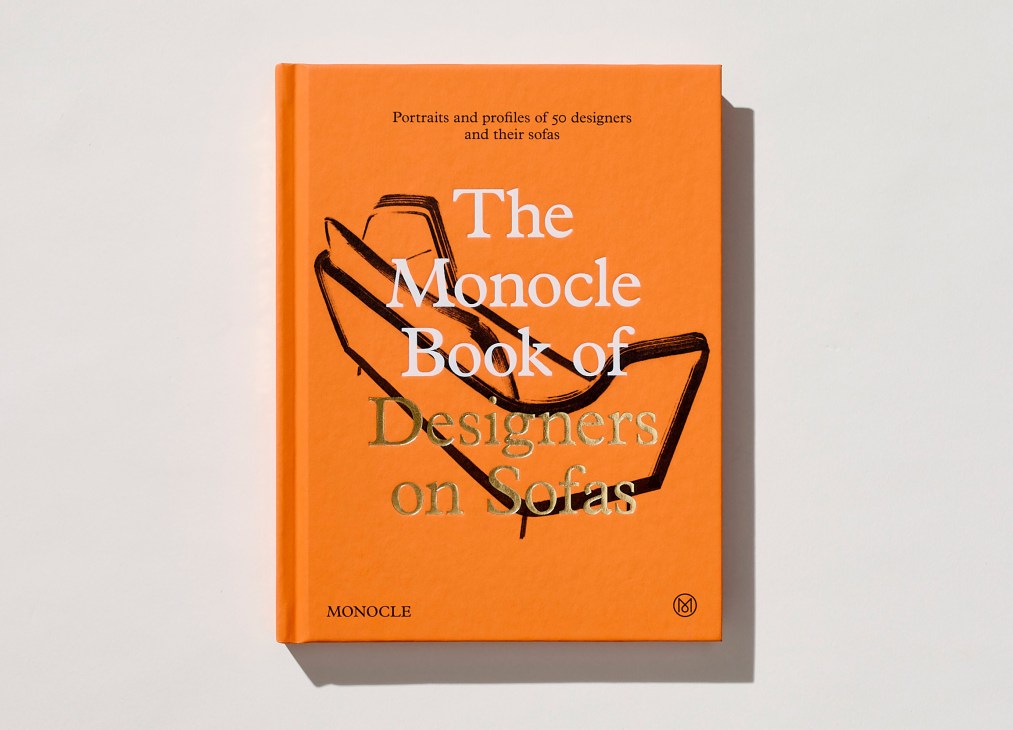
For 15 more Monocle-recommended book gifts, tap here
14.
Grippy sneakers from Gothenburg based Icebug to keep you from falling on your ass in Verbier

15.
A heavily accessorised purse from Belgian brand My Bob for a stylish conversation starter

Tap here for Monocle’s 12 recommended wines for Christmas
18.
Lyse Doucet’s new book ‘The Finest Hotel in Kabul’, which will stay with you and anyone you gift it to
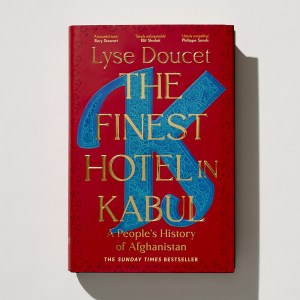
19.
Notecards and pens from Penco to write polite notes to remind people to not use their speakers in public

Need even more ideas for your wish list? Monocle has curated a selection of 15 brilliant books to gift to the friend who has ‘read everything’, 23 well-designed gifts to give the interiors-obsessive in your life and five architecture and design books waiting to be unwrapped this year.
Since taking up leadership of Air France-KLM in 2018, Benjamin Smith has brought stability and modernisation to the company. Through major investments in next-generation aircraft and steadying labour relations, Smith has been responsible for steering the group back to profitability after the coronavirus pandemic.
He joined our editorial director, Tyler Brûlé, in Studio 5 on Rue Bachaumont, Paris, to discuss how he restored profitability and improved efficiency, luxury and sustainability.

This conversation has been edited for length and clarity. Listen to the full interview on ‘The Chiefs’ from Monocle Radio.
Earlier this year, you launched La Première, your newest first-class experience. What has the response been like?
It has been fantastic and exceeded our expectations. We’re going to expand the footprint by 50 per cent, adding more aircraft to the fleet with La Première cabins. We keep adding to the amenities that our customers are asking for. We believe that we can give the Gulf carriers a good run for their money but we view the Gulf carriers not as companies and instead as countries.
Can Air France compete against a country? I guess it depends on what the country wants. In Asia, we don’t have the same work rules. There are two or three in Asia that are a bit of a challenge but we went from number 26 in the world to number eight. We want to be number one in Europe in every cabin and I think we can get there.
Looking ahead, where is Air France-KLM focusing its growth? What new routes can passengers expect in 2026?
Prior to our decision to expand the fleet equipped with La Première cabins, the US was our number-one market. We’ve just announced that we’re going to add Boston and Houston in the US, as well as Atlanta – the home base of our partner Delta. We’re going to add more services to Asia: we’ll go to Hong Kong and perhaps we’ll see how Tel Aviv goes. Maybe one or two more in the Middle East. But if you look at the major GDP cities of our long-haul network, you can pick the next five or 10. The destinations we announce won’t be a surprise.
It has been a complex year for global aviation. What were the defining issues of 2025 for you?
We’re looking closely at overflight rights, taxes and mandates for fuels such as SAF [sustainable aviation fuel] and for ETS [Emissions Trading System] charges. We are advocating for European-based carriers to have a total level playing field. We have lost customers because of our inability to fly over Russia. But, for the most part, our best customers are staying with us. They’re happy with our service. What is impactful is the cost of operating. There are extra fuel and air-crew costs because they’re flying more.
Listen to the full interview on ‘The Chiefs’ from Monocle Radio.
Christmas is a time for new traditions, not old ones. There, I said it. The famous line, often credited to Einstein, about insanity being the repetition of the same behaviour with the expectation of different results feels especially apt at this time of year. Attempting to restage a version of a Christmas Day that we enjoyed sometime in the mid-nineties is a mistake. The gap between expectation and reality is rarely narrowed by repetition. And so perhaps this is the year for a recalibration: a fresh ritual instead of a tired one; a punch-up with the season’s well-worn script.
One definitive way to do exactly that, if you haven’t done one before (or at least, for a while) is to throw your own Christmas party. This is particularly pertinent if you’re the sort of person who shies away from birthday celebrations (and from the tyranny of being sung at in public).

Hosting a Christmas party is different. It’s not about you, it’s about the season. It’s a celebration of the unofficial end to the working year and the domestic moment that December encourages. You are not the centrepiece but the conduit – a far more comfortable role for many.
And unlike birthdays, the diary date is wonderfully elastic. You can be as last-minute as you like without offending those guests who really are being invited last-minute. Any date of the month will do, with the 24th available for those confident that their guests haven’t yet retreated to family homes.
Last year, I attended an immaculately well-executed example at a friend’s house in London. Granted, they run a successful bakery, but the mechanics of the evening are replicable. Most importantly: something hot, involving pastry, must appear on the table early in the evening. Homemade is best; a mince pie straight from the oven is ideal. And if you don’t bake, shop-bought versions are acceptable but only if warmed, dusted with icing sugar and served with the self-deprecating honesty that lets everyone know that you don’t know your way around a pastry cutter.
Then there’s the guest list. Christmas parties allow for a social looseness that birthdays largely can’t accommodate. A birthday tends to tighten the circle; a Christmas gathering can expand it. Neighbours, colleagues, the trainer you sweat in front of at 07.00 – December is the one time of year when social circles can overlap without awkwardness. A mixed guest list produces its own kind of cocktail: new introductions, revelations and that glorious feeling made possible with a “one-night-only” kind of energy.
Timing is also refreshingly efficient. Nobody organises a birthday party from 18.00 to 20.00 – that would feel joyless. Yet, for a Christmas party, a defined two-hour window is not only acceptable but appreciated. People have schedules, school plays, flights to catch. A neat slot respects the season’s busyness. It also keeps the atmosphere festive, purposeful and pleasingly contained, not to mention makes room for an after-party to start at 20.30.
A final non-negotiable note: a house cocktail. Ideally it’s something pre-mixed, decanted into a vessel and poured with minimal fuss. A lemon drop martini works well and so does an old fashioned with added festive cinnamon stick. Offer a second option that is even simpler, the kind of assembly-line drink that a willing, more introverted guest can manage while you attend the spiced nuts (all Christmas parties must feature spiced nuts). Your signature drink will lend a touch of ceremony – a new tradition to toast with.
What all this amounts to is a soft argument for rethinking ritual at this time of year. Christmas, with its curious blend of nostalgia and optimism, is fertile ground for a new practice or three. A modest gathering at home, not over-produced but thoughtful, can be its own tradition. Whether or not it becomes an annual fixture is irrelevant. What matters is the gesture – a well-made thing in a season that rewards those who like to make a little magic.
Emily Bryce–Perkins is a London-based writer. For more opinion, analysis and insight, subscribe to Monocle today.
Read next: How to throw the perfect festive gathering: 20 tips from esteemed hosts
A year has now passed since the crowds lining up for glühwein, deep-fried Lángos and Gebrannte Mandeln at a Christmas Market in Magdeburg, Germany, were replaced by police tape, boarded-up stalls and candlelit vigils. It was on the evening of 20 December 2024 that a man driving a rented BMW accelerated into the crowded market in the city centre, killing six people and injuring more than 300. The city went into shock. The carousels stood still. Christmas was all but cancelled. When I arrived in town shortly after the attack, the streets were deserted and the market bestrewed with the detritus of disaster. The only people I could find were huddled outside church doors, standing solemnly and shaking in the winter wind like the flowers laid at their feet.
This year the markets are back on and, from here, it is hard not to think of my hometown, Sydney. Across the globe – in what must seem like a summer fever dream – my fellow Sydneysiders are still reeling from a terrorist attack targeting a Hanukkah event at Bondi Beach that claimed the lives of 15 people. The shock will eventually subside but what follows is the slow, painstaking work of restoring order – judicially, culturally and socially – to a city shot through with violent chaos.

Unlike Australia, which has little in the way of history when it comes to terrorist attacks on its own soil, Germany had been here before. In 2016 an Islamist attacker killed 13 people when he drove a stolen truck into a Christmas market in Berlin. And just this past weekend, German police arrested five men for planning to attack a Christmas market in southern Bavaria. Still, nobody expected the terror to arrive in a mid-sized city such as Magdeburg, which last found itself in anything approaching international headlines in the 10th century, when Holy Roman Emperor Otto the Great chose it to be his imperial centre.
This year’s markets feature a strong security presence with a combination of concrete barriers and heavily armed police surrounding the event, plus more patrolling within. But much like the glow of Christmas lights punctuating the shadow of last year’s tragedy, Magdeburgers are embracing a defiant spirit. Nevertheless, that shadow is close at hand. In early November, the man accused of carrying out the attack went on trial. Taleb A – his full name redacted under German privacy laws – is a Saudi Arabian doctor and refugee, now facing life in prison. Chief public prosecutor, Matthias Böttcher, told the court that Taleb A planned the attack over a matter of weeks. His aim? “To kill an indeterminate number of people”.
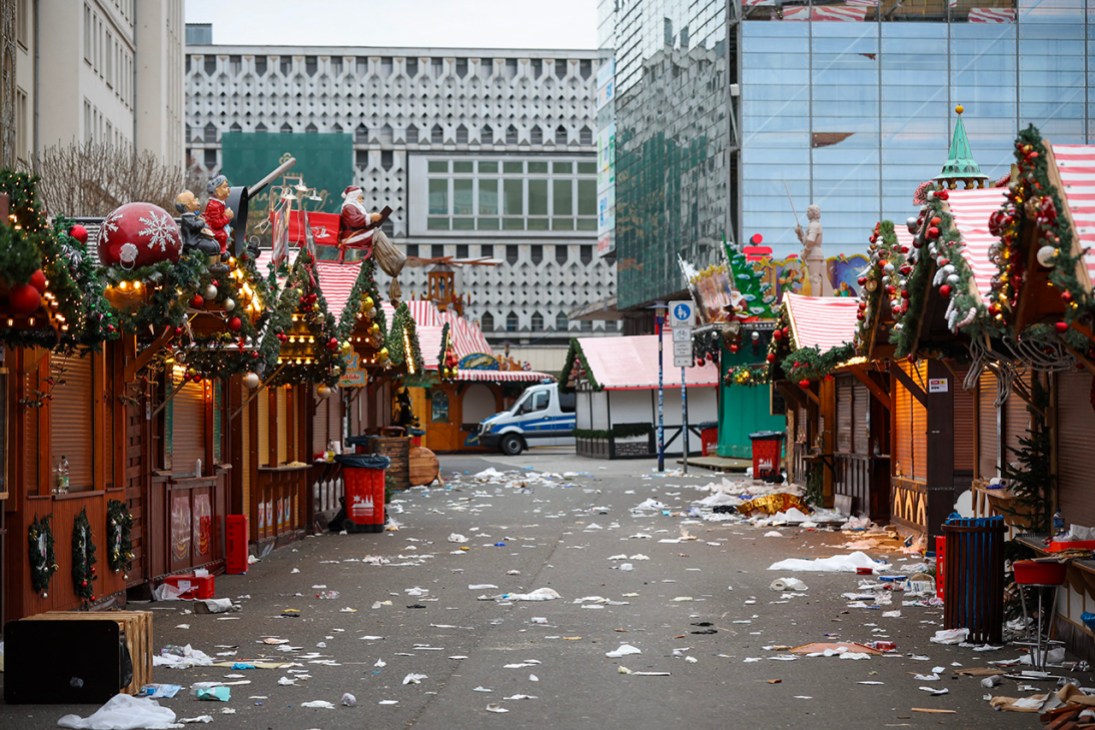
At the time of the attack, officials described Taleb A as an “untypical” perpetrator. He had publicly criticised Islam and expressed support for the far-right Alternative for Germany (AfD) party. The state of Saxony Anhalt, of which Magdeburg is the capital, is considered an AfD stronghold. In the courtroom, however, ideology must give way to evidence and the methodical machinery of German justice.
Due to the sheer number of victims, a temporary courthouse has been erected at Jerichower Platz in the city’s east. The 2,000 square-metre structure, which by trial’s end is expected to cost several million euros, has space for 700 people and security measures that wouldn’t look out of place in The Hague. The defendant sits in a glass-enclosed dock. A gallery with seating for up to 450 is available for the hundreds of plaintiffs, while a further public gallery separated by another glass partition is supplied with a livestream broadcast. At the building’s unveiling, justice minister Franziska Weidinger said it’s about giving the huge number of victims a chance to participate. “We owe that to the victims of the attack.”
The trial is expected to last for about a year, with 47 hearings already scheduled. Weidinger expects the trial to be one of the largest in postwar German history, likely to surpass in scope the National Socialist Underground trial in Munich.
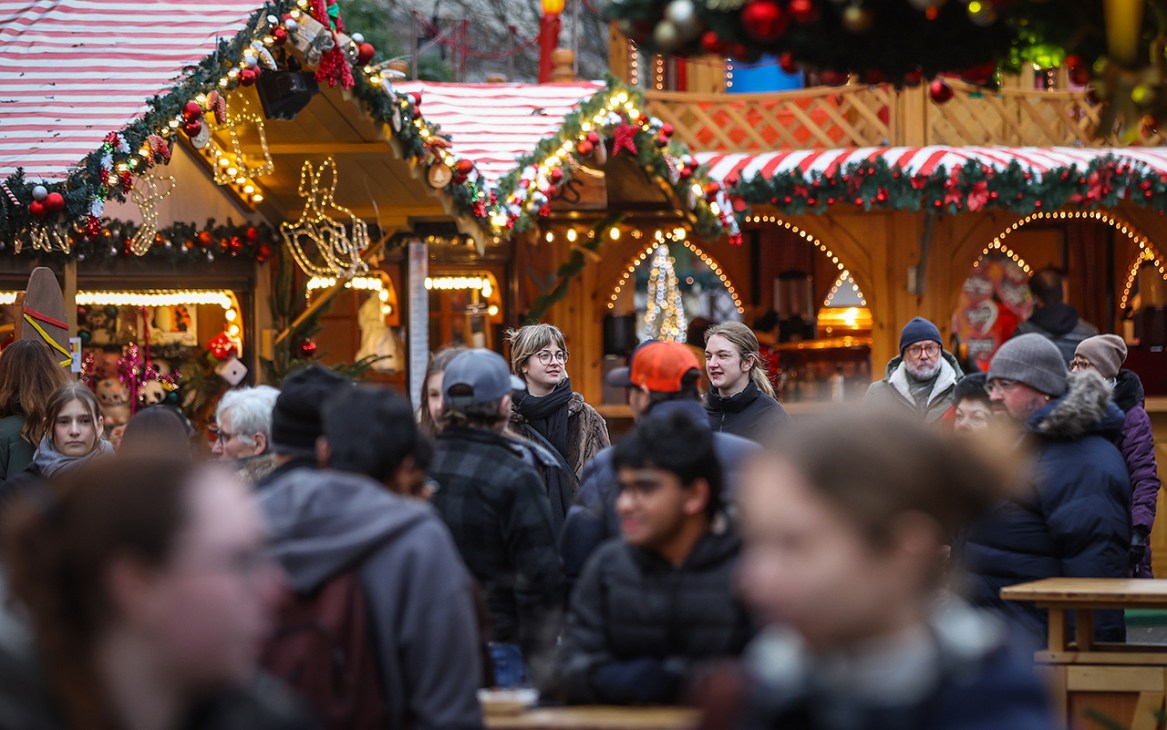
The fact that Magdeburg’s Christmas Market is back under way across the River Elbe while Taleb A is in the dock is a sign that justice, along with glühwein, is already being served. Among the wooden stalls, steam from many cups of hot spiced wine rises in unison through the cold air. The feeling might be somewhat subdued but there’s still Bratwurst im Brot, Santa sightings and my personal favourite, Quarkbällchen – deliciously sugar-dusted doughnut balls made using quark. The people of Magdeburg are not letting fear and hatred hollow out their community spirit.
For further proof that the German city is refusing to let terror win, we need look no further than its Opera House. This year’s Christmas schedule includes a ballet adaptation of William Shakespeare’s A Midsummer Night’s Dream, which might not sound on point seasonally, nor particularly German – but as one of my literature professors at Freie Universität Berlin joked at the beginning of a lecture: “Germany has three great writers: Goethe, Schiller and Shakespeare.” It was tongue-in-cheek but only just. And that’s because the Germans fell in love with the Bard almost as soon as the English did. They embraced Shakespeare the way the Italians embraced the tomato – wholeheartedly. August Wilhelm Schlegel called him “ganz unser” (entirely ours). Today, there are more productions of Shakespeare in Germany than in England.
Shakespeare’s habit of timelessness is sure to be re-enforced when Magdeburgers hear Lysander utter the line, “So quick bright things come to confusion”. And yet, so slow confusion takes to untangle, so arduous the arc of justice, so interminable the course of grief.

The play’s development from confusion through transformation to eventual harmony is apposite. But what is more, the play is set in an enchanted forest. And while other nationalities, such as the British, like to cosy up at home in the wintertime, Germans like nothing better than to get into the great outdoors, to feel the brisk air among the pines, beeches and oaks.
A year on, Magdeburg is a city living in two emotional seasons simultaneously. It is serious, reflective, legally meticulous. And it is also determinably alive, responsive to life’s slings and arrows. The markets are open. There are dancers in the enchanted forest. And so the people come to the Christmas markets, they walk along the River Elbe, through the Romanesque cloisters and past the Gothic cathedral whose stones have seen sackings, fires, plagues and rebuildings before. The people of Magdeburg are not letting fear and hatred hollow out their community spirit.
From here, it’s possible to imagine what Sydney might look like a year from now. I’d like to think that we’d see a city similarly defiant in the face of terror and anti-semitism, comfortable enough in itself to come down to that fatal shore in droves, as they have been doing already to grieve and give blood. Then, as long swells beat in from the horizon and the sun slouches westward, Sydneysiders will gather on the beach or paddle out beyond the breakers to remember the brave and the lost, and to restore order from confusion not through rhetoric, prevarication or forgetting but through justice, ritual and coming together.
To listen to an audio version of this article read by the writer, tune in to ‘The Monocle Daily’.
The glimmering glass-and-metal skyscrapers jutting up around Riyadh’s King Abdullah Financial District (KAFD) feel like a declaration of intent. With Saudi Arabia starting to spend its vast oil wealth on architecture – much of it future infrastructure to accommodate the 150 million tourists a year that it wants to welcome by 2030 – cranes dot skylines from Jeddah and Diriyah to AlUla.
As the country opens to the outside world, design is becoming a greater part of national discourse (the Design & Architecture Commission was only created in 2020, part a Ministry of Culture that was established a mere two years earlier), and industry opportunities abound. This explains why Milan’s international design fair, Salone del Mobile, touched down in Riyadh last month. Located inside a partially open-air space in KAFD, turned a Salone shade of red for the occasion, it featured iconic pieces of “made in Italy” furniture from Poltrona Frau to Poliform.


The three-day event, called “Red in progress. Salone del Mobile. Milano meets Riyadh”, set the scene ahead of a fully-fledged edition coming next year. The 38 Italian brands travelling with the delegation were hoping to make deals with local contacts to open Saudi retail outposts or furnish the interiors of new projects. But a series of panel talks organised at the same time as design brands were fleshing out deals in a nearby business lounge gave a fascinating window into the shape-shifting design scene and what Saudis are thinking.
Saudi Arabia’s emerging architectural voices
Away from the attention-grabbing headlines about Giga projects and big-name firms, a crop of young Saudi architects and designers – many of whom have returned from stints abroad in the US, UK or even Spain – are getting introspective about the sort of future they want to help build.
Landscape designer Lulu Almana recently moved back after a six-year stint at Arup in London. While working on Saudi projects from there, she realised that she wasn’t close enough. “I had a growing desire to just be here and be playing a more direct, active role in designing these spaces and shaping the cities that we live in,” she tells Monocle from KAFD. “As a designer, I felt like maybe this was the moment.”
This year, Almana worked on Saudi Arabia’s debut at the Milan Triennale, showcasing a project called “Maghras: A Farm For Experimentation”, co-curated with Sara Al Omran. About to start its second season of programming, Maghras is located on a farm in Al Ahsa, the oldest and largest oasis in the world, and mixes workshops, research, and talks from architects and designers as a way of looking at the changing landscape. In short, Maghras is deeply rooted in place – which is what Almana is looking to do for future projects as she gets stuck into “all of this soul-searching type of work”.
The designer is drawn to collaborate with communities to help regenerate public spaces. When Monocle meets her, she is only a few months into running her own practice but is already working on Rufaida Park in Dammam, in the eastern part of the country, which is due to open in mid-January. Looking to address the needs of an elder segment of the population, it includes native trees and medicinal plants, an outdoor gym and a tea-drinking area.
Since moving back, Almana says that she has had this strong desire to root herself “in this next context”. Part of that process is cataloguing what Saudi Arabia already has. “What do we have that we haven’t been paying enough attention to?” she asks. She doesn’t rule out taking road trips around the country to see what she can learn from certain landscapes. In truth, the seeds of her desire to catalogue started when she was in London and hired by the Architecture & Design Commission. She was tasked with creating a “very practical and process-based” manual for landscape designers that makes them think about sustainability and cultural continuity, among other ideas, when approaching a new project. It’s designed to be used in parallel with another new document called the King Salman Charter for Architecture and Urbanism, drawn up by the same commission. The latter has six core pillars, including liveability and authenticity, aimed at making designers ask themselves the right questions.


Abdulrahman Gazzaz, who co-founded Jeddah’s Bricklab alongside his brother, Turki, and spoke at a “Red in progress” talk about building in an extreme environment, is another architect looking to document what is happening around him. Part of his research has involved thinking about new ways to represent Saudi architecture – beyond the ubiquitous triangle motif that is inspired by ventilation windows on historic mud-hut structures. “There are so many different motifs to look at,” he says. “It’s just [about] trying to understand the banal and the mundane that you see in the city on a daily basis.”


Gazzaz, who studied in Bristol in the UK, says that educational intuitions provide books on architecture from Germany or France but never Saudi Arabia. Which is why he set about creating a record through a book called Saudi Modern: Jeddah in Transition 1938-1964. Meticulous, research-led work like that has led to Bricklab focusing a large part of its energies on adaptive reuse projects – including Attaché, a redeveloped former stable in the capital’s Diplomatic Quarter – although Gazzaz doesn’t rule out working on new-builds, such as a recent project for the Ministry of Culture in Riyadh’s Jax neighbourhood.
Shaping identity in a fast-changing built environment
Thinking about big topics such as identity isn’t always easy in a country that seems in a hurry to leap forward and where projects go up at a breakneck speed. For Abdullah Alazzaz, creative director at Azaz Architects, which was originally founded in 2017 by his sister, Shahad, there’s a question of which historical moment you take as a starting point when searching for authenticity from your past. Alazzaz, who studied civil engineering in upstate New York and worked in finance in London before heading home, doesn’t think these references need to exist for the sake of them. He’s just happy to “get a front-row seat” on everything that is happening, working on everything from residential to Giga projects. “It’s very rewarding to feel like we’re shaping something for the future,” he says.


As the country continues to evolve, so too does the architecture profession. When Alazzaz’s sister started “as a one-woman show”, times were different – both economically and socially. Now, as more architecture departments and schools for women start to open, a whole new generation is set to emerge with a heightened interest in the built environment and ready to play an active role in Saudi Arabia’s development. “There is a huge need in the market for architects – especially female ones,” says Noura Ghabara, assistant professor in architecture at Jeddah’s King Abdulaziz University, from a red bench-seat in KAFD. “We look at things differently. I am not saying one is better than the other but it’s just about complementing each other.”
Ghabara, who gave a masterclass about reimagining the future of the built environment in which she constantly threw to the audience, believes – as you might expect given her academic position – that education is key as Saudi Arabia soul-searches for how it wants to develop. “We are realising that we can’t have the answers now,” she says. “This is something that will take time. But we have to lay the foundation for future generations.”
“Red in progress” ran from 26 to 28 November. Look out for Monocle’s report from Saudi Arabia in our ‘Salone del Mobile’ newspaper, published in April. The inaugural Salone del Mobile Riyadh will take place in November 2026.
Can something as simple as the temperature change how we feel about ourselves and the world? Can it boost our mood, concentration and even make us nicer people? Science and a growing body of research is, well, warming to the idea.
Sadly, the recent rise of the energy price cap in the UK is further compounding the problem of cold homes and workplaces that affect the nation’s depleted reserves of health and happiness. Britain’s energy prices are among the highest in Europe according to the International Energy Agency and the country has some of the continent’s least energy-efficient homes. Our cosy cousins on the continent enjoy buildings that are up 30 per cent more energy-efficient than ours, says research by Imperial College London.
Luckily, benighted Brits needn’t look far for inspiration. Copenhagen is powered by a one-for-all heating system, largely from biomass that would otherwise be wasted. Sweden is a world leader in the installation of heat pumps, while Norway has nearly fully decarbonised its heating system: 85 per cent of its buildings are now warmed through electricity (the majority produced sustainably). That’s all before we point to the Scandis’ pragmatism and superior policies on everything from building development and certification to insulation.
Some problems in the UK are literally structural – I say this as the owner of a century-plus-old home with a rickety roof, thin brick walls and disastrously draughty windows. Sadly, my own experience with the onerous planning system left me as likely to jump out of a window as replace it.

Some solutions are listed in the Cosy Manifesto in our December-January issue, which is out now. There’s triple glazing that can withstand a Nordic gale, which the Danes do best: think Horsens-based Velfac to Viborg’s Unik Funkis and Glaseksperten in Hjørring. We recommend ideas as simple as using suitable natural materials such as cork in homes and wool in our outfits, and encouraging architects to consider smaller, cosier, easier to heat rooms. Our editor in chief, Andrew Tuck, also pens an enthusiastic aside for sharing a bed.
Beyond survival and a basic biological need to maintain a constant temperature, humans also instinctively connect physical warmth with comfort and positivity – in life as in idiom (warm hearts and welcomes, and fuzzy feelings, for instance).
Research has shown that literal warmth also promotes interpersonal warmth (so cold people really can be meaner). A Swiss study from the Journal of Environmental Health in 2023 confirms what anyone out in the winter with wet socks and a thin jacket could tell you for free – being warm makes us feel better. The cold hard truth? Cosiness and how it’s achieved should be a hot topic.
Josh Fehnert is Monocle’s editor. For our Cosy Manifesto and plenty more to keep you warm this winter, buy our out-now December/January issue, subscribe today or read it here.
My window frames a view of Venezuela’s Lake Maracaibo, one of the largest lakes in the Americas and the cradle for some 19 billion barrels’ worth of oil. Last night, US president Donald Trump ordered a “total and complete” blockade of all sanctioned oil tankers entering and leaving the country. If any noise runs through the city, I look north to figure out whether the bombing – threatened by Trump against alleged drug lords in Venezuela – has begun. There are still no bombings but it cannot be long before they start.
Maracaibo, 700 kilometres from the capital city of Caracas, is considered Venezuela’s second-most important city and a possible target of attacks. Capital of the Zulia region and bordering Colombia, it is nicknamed the “Land of the Beloved Sun” for its balmy 30-degree temperatures. It has been a key gateway to the country’s oil business for the past century, providing more than 80 per cent of Venezuelan crude production.
Venezuela’s economy has experienced one of the most severe economic collapses in modern history, with its GDP shrinking by more than 70 per cent in the years between 2014 and 2021. Some eight million Venezuelans have left the country in recent years and nowhere has that exodus been more clearly felt than in Maracaibo. People here are concerned about low incomes, the volatile exchange rate of the US dollar and the amount of products in supermarkets. An imminent offensive by the most powerful army in the world seems far from front of mind.
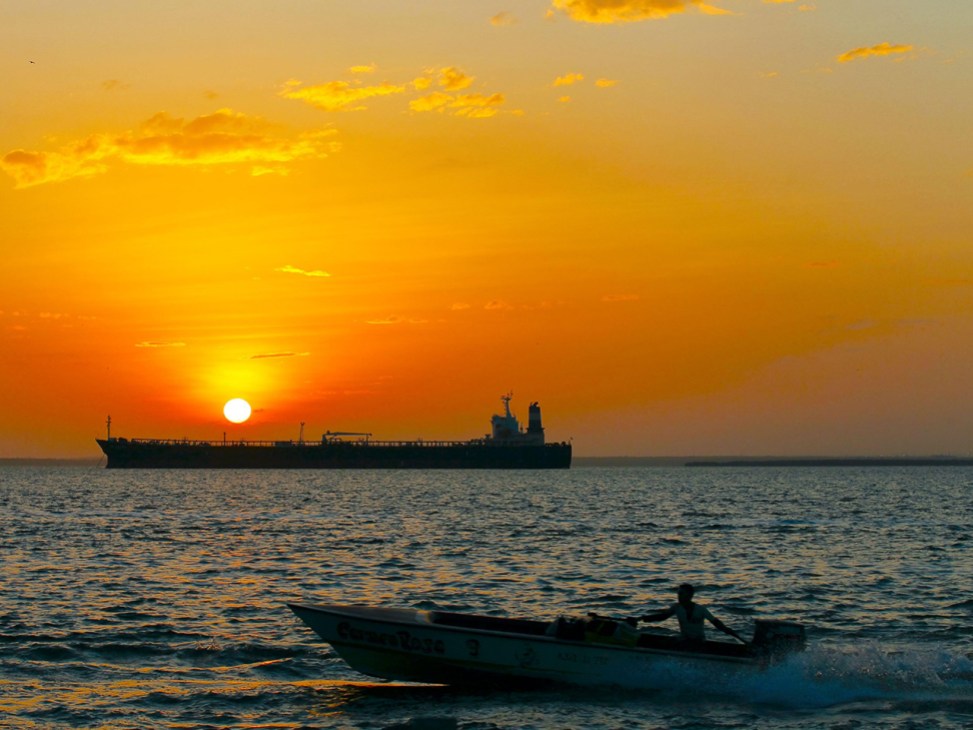
“There is expectation and uncertainty but I am more concerned about how the prices of everything, especially food, are rising,” Juan, a young resident of a neighbourhood in northern Maracaibo, told Monocle. “The fear of authorities is also spreading among the locals.”
People are right to be wary. Maduro’s government has arrested hundreds of political activists, human-rights defenders, journalists and citizens critical of his administration. There are more than 900 political prisoners in Venezuela, according to the NGO Foro Penal. Last year alone, authorities arrested 2,500 dissidents following the presidential election. There are checkpoints and patrols, including by military and agents of the political police, SEBIN, who look through mobile phones and computers without court orders in search of private conversations that might reveal support for Trump’s warfare campaign. But no one wants to join an armed conflict to fight for Maduro or Trump. The idea of taking to the streets for any political leader after decades of crisis, repression and censorship is farcical to most.
“Neither the opposition nor the Maduro government have people willing to give their lives for their country,” said José, a restaurant owner in Maracaibo. Maduro, who has been in power since 2013, says that he has at least eight million troops and civilians ready to defend their homeland. A spurious augury in a country that hasn’t been involved in a formal war in the past two centuries.
“We’re overwhelmed,” said Sara, a domestic worker who cleans homes six days a week. “Our public services, healthcare and economy have been experiencing trauma for a long time. If we add a war, well…” Frustrated, she shrugs her shoulders. Her reaction sums up the mood in this city.
In 2019 a wave of looting – during an electrical failure that left most of the country in the dark – changed the city’s complexion for good. It has never regained its spark. Maracaibo stopped publishing its main newspaper due to lack of newsprint; Maduro’s government controls the supply chain of paper and ink.
A fellow journalist compared the situation then to a “war zone”. I never thought that description could be so literal a few years on. From my window next to the lake, the waters might be gentle but the mood among my neighbours, local businesses and community is palpably nervous. “When and how?” Well, nobody seems to know – perhaps not even Donald Trump – but for those who have lived without any stability for years, it’s a question that we are all used to asking.
